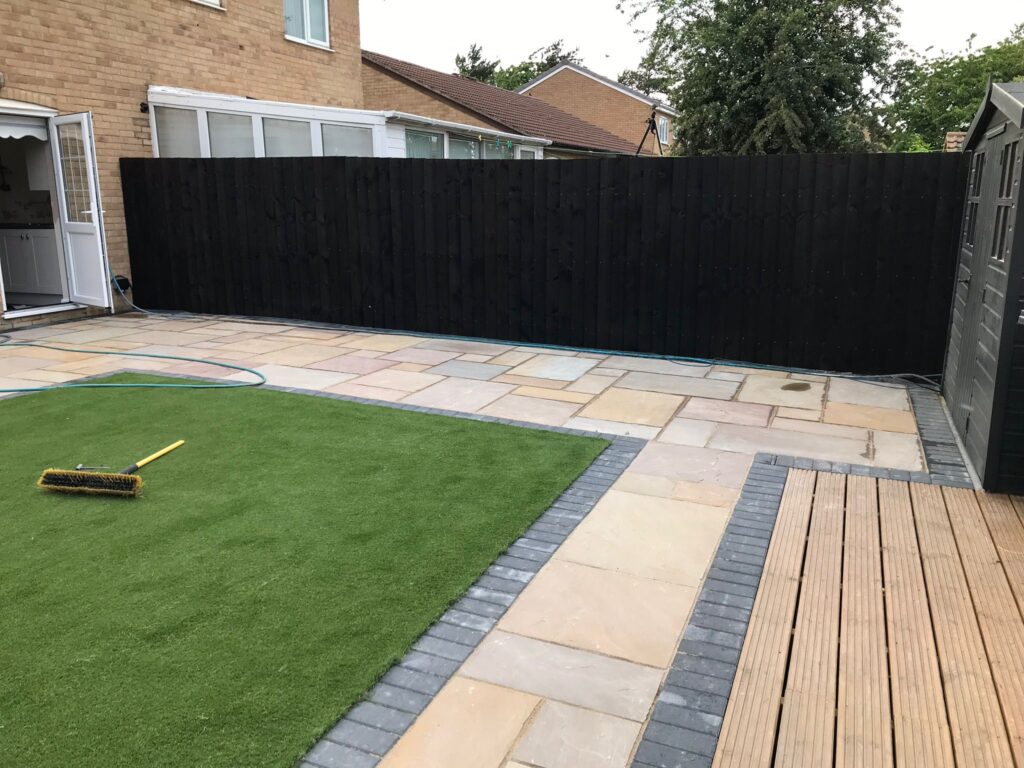Commercial Tarmac Surfacing Explained: Driveways, Car Parks and More
Tarmac remains one of the most popular and versatile surfacing materials for commercial and residential use alike. Its strength, durability, and smooth finish make it ideal for everything from driveways and car parks to roadways and loading areas. Understanding how commercial tarmac surfacing works — and the benefits it offers — can help property owners make informed decisions when planning a new surface or refurbishment.
At Wellingborough Driveways & Patios, we specialise in providing high-quality tarmac solutions across Wellingborough and Northamptonshire, ensuring every surface is practical, long-lasting, and professionally finished.
What Is Commercial Tarmac Surfacing?
A Proven and Reliable Surfacing Method
Tarmac, short for tarmacadam, is a blend of crushed stone and bitumen used to create smooth, resilient surfaces. It’s commonly applied in layers, compacted under pressure to create a hard-wearing finish that can withstand heavy use.
Why It’s Favoured for Commercial Use
Commercial properties require surfaces that can endure high traffic levels, varying vehicle weights, and constant exposure to the weather. Tarmac is an ideal choice because it offers:
- Excellent load-bearing strength.
- Resistance to cracking and water penetration.
- A sleek, professional appearance suitable for business premises.
- Low maintenance requirements once installed correctly.
Where Tarmac Surfacing Is Commonly Used
Driveways
For commercial properties and residential developments, tarmac provides a neat, durable finish that can handle constant vehicle access. It’s often used in office blocks, apartment complexes, and shared access roads due to its ability to support both light and heavy vehicles.
Car Parks
One of the most common uses for commercial tarmac surfacing is in car park construction. Its durability makes it perfect for areas that see high traffic volumes, while its smooth texture ensures safe and comfortable movement for vehicles and pedestrians alike.
Benefits of tarmac car parks:
- Can be clearly marked for parking bays or pedestrian routes.
- Withstands oil spills and temperature fluctuations.
- Easily extended or resurfaced as business needs grow.
Access Roads and Pathways
Tarmac is also widely used for access routes within industrial estates, business parks, and retail sites. Its strength and stability provide a dependable surface that remains smooth and usable even under continuous heavy use.
Loading Bays and Delivery Areas
In areas where heavy goods vehicles operate, tarmac offers a reliable, flexible surface that can absorb the stresses of frequent loading and unloading. The material’s ability to flex slightly without cracking helps it cope with weight variations and frequent turning movements.
How Commercial Tarmac Surfacing Is Installed
At Wellingborough Driveways & Patios, every tarmac project follows a structured process to guarantee durability and visual appeal.
1. Site Preparation
The surface area is excavated and levelled to create a solid foundation. Any weak ground is stabilised to prevent future movement.
2. Sub-base Installation
A strong sub-base layer, typically made of crushed stone, is compacted to provide essential stability and load-bearing strength.
3. Application of Binder and Surface Layers
Hot tarmac is laid in multiple layers — a binder course followed by a surface course — to achieve the required thickness and smoothness.
4. Compaction and Finishing
Each layer is rolled using heavy machinery to create a compact, seamless surface ready for use once cooled and set.
Why Choose Tarmac for Commercial Surfacing
Durability and Strength
Tarmac is designed to handle the demands of high-traffic areas, providing years of service without significant wear.
Quick Installation
Compared to some alternative surfacing options, tarmac can be installed efficiently, minimising disruption to commercial operations.
Low Maintenance Requirements
Once in place, tarmac requires very little maintenance. Occasional sweeping and small-scale repairs help keep it in top condition.
Adaptability
Whether you need a small access road or a large-scale car park, tarmac can be applied to virtually any area or gradient.
Professional Appearance
A clean, black tarmac surface provides a polished, professional look that complements both modern and traditional properties.
When to Consider Upgrading or Resurfacing
Even the most durable surfaces eventually show signs of wear. You should consider resurfacing if you notice:
- Cracks or surface deterioration.
- Pooling water after rain.
- Uneven or sinking areas caused by ground movement.
- Frequent repairs becoming necessary.
Upgrading to a newly surfaced tarmac area can restore appearance, improve functionality, and ensure the surface remains safe and efficient for all users.
Why Work with Wellingborough Driveways & Patios
Wellingborough Driveways & Patios delivers professional tarmac surfacing for commercial and domestic clients throughout Wellingborough and Northamptonshire. Our experienced team ensures that every project — from car parks and driveways to access roads and loading bays — is completed to the highest standard, using reliable materials and modern techniques.
We focus on providing durable, attractive, and functional surfaces that enhance both the usability and appearance of your property.
Conclusion
Commercial tarmac surfacing offers a dependable solution for driveways, car parks, and access roads, combining strength, smoothness, and professional appeal. Whether you’re developing a new site or refurbishing an existing surface, tarmac delivers the performance and longevity modern properties demand.
Wellingborough Driveways & Patios in Wellingborough, Northamptonshire, provides expert tarmac surfacing designed to meet the needs of commercial and domestic clients alike. For a durable, long-lasting surface that enhances your property, contact Wellingborough Driveways & Patios to discuss your next tarmac project.
Call us on: 01933 823 204
Click here to find out more about Wellingborough Driveways & Patios
Click here to complete our contact form and see how we can help with your driveway needs.
